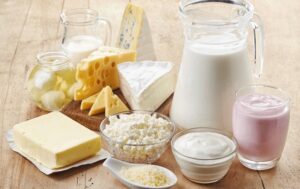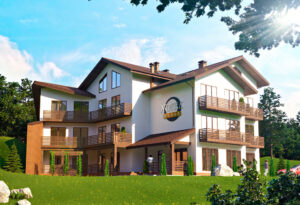
Consumer prices in Turkey in September increased by 49.4% in annual terms, according to a report by the country’s statistical institute (Turkstat). The growth rate slowed from 52% in August and was the lowest since July 2023. The weakening of inflation was noted for the fourth consecutive month.
The consensus forecast of experts, cited by Trading Economics, assumed an even more significant slowdown in consumer price growth – to 48.3%.
The increase in the cost of food and non-alcoholic beverages in September slowed to 43.7% from 44.9% in August, transportation services to 26.6% from 29%, and utilities to 97.87% from 101.49%. Prices in hotels, cafes and restaurants increased by 65.41% (+67.7% a month earlier), alcohol and tobacco products went up by 52.35% (+60.94%), educational services by 93.59% (+120.81%), and medical services by 50.7% (+53.49%).
Consumer prices in Turkey in September increased by 2.5% compared to the previous month after rising by 3.2% in August.
Producer prices (PPI index) in the country last month increased by 33.09% in annual terms and by 1.37% in monthly terms, Turkstat reported. In August, they rose by 35.75% and 1.68%, respectively.
The Turkish Central Bank has kept its key interest rate at 50% since March this year, and tight monetary policy has helped to ease inflation. Back in June 2023, the rate was at 8.5%.
Trends in the global and Ukrainian economies can be tracked via the Experts Club information and analytical channel – https://www.youtube.com/@ExpertsClub

Ukrainian product IT holding Genesis has opened almost 400 vacancies for IT specialists in Ukraine, despite the difficulties for the market and companies in the sector, said the company’s founder and CEO Volodymyr Mnoholyetnyi.
“In terms of markets, we have no revenue in Ukraine (the company is focused on foreign markets – IF-U), but in terms of people, we hire (them – IF-U) in Ukraine. We have about 400 vacancies. This is the largest number of open positions,” he said at the conference ‘Business and War – Dialogues about the Future’ organized by New Voice.
According to him, the situation on the IT market in Ukraine has become more complicated, especially for relatively small companies. There are also difficulties with hiring specialists.
“The market is much more complicated now than it was a year or two ago. Of course, it’s more complicated than it was before the full-scale invasion (…) I don’t understand how relatively small and small IT companies work,” said the founder and CEO of Genesis.
Mnogoletyniy suggested that this could be a problem for the IT industry in the long run, as the market will not develop properly if only large IT companies are represented.
According to his estimates, about 20-30% of Ukrainian IT specialists are abroad. Among Genesis employees, it’s 10-15%, while most of the management team works in the country.
Genesis is a Ukrainian co-funding IT company. It specializes in building global technology businesses with entrepreneurs in Central and Eastern Europe. About 8% of the company’s revenue comes from mobile applications. Genesis employs about 2.5 thousand people.

In Ukraine, raw milk prices rose by 10% in September, and over the past three months they have risen by almost a quarter, while the cost of processed products has risen by 15%, according to Infagro, an industry information and analytical agency.
“The weather has become quite comfortable, there are fewer power outages, cow productivity is recovering, and milk is available. With the relative stability of energy supply, there are fewer problems with the collection of raw materials and logistics. All this is good for milk producers, but processors suffer from the growth rate of prices for raw milk,” the analysts said.
Experts noted that the current purchase price of milk at 18 UAH/kg is no longer surprising. Moreover, there are cases of its purchase even at 19 UAH/kg. Processors are also trying to raise prices for their products. However, while milk prices have risen by a quarter, few have managed to increase prices for most dairy products by more than 15%, except for some butter producers. As a result, most factories are already operating on the brink of loss, and some are making a loss.
“The price increase will not stop in October. Fresh dairy products and cheeses may rise by another 12-15% by the end of the year. That is, dairy inflation in 2024 could be three times higher than the overall inflation in Ukraine. Of course, this will lead to a decrease in the consumption of dairy products in favor of other products with a lower degree of price increase,” experts predict.
Analysts believe that the main reason for the rapid rise in raw material prices is the high butter prices, which have already reached their peak.
“It is very likely that in October European traders may significantly reduce their demand prices for Ukrainian products. In this case, the chase for raw materials in Ukraine will definitely stop, and starting in November, milk purchase prices will stop rising. And if the rise in prices causes a significant drop in sales of dairy products, it is even possible that, despite the period of the lowest supply in the season, there will be a certain decrease in the cost of raw materials,” Infagro summarized.

In the Ukrainian hospitality market, 45 new projects of hotel and apartment complexes and 108 hotel-type cottage towns are planned for 2024-2026, according to a study by Ribas Hotels Group.
According to it, in the next two years, the announced replenishment of the room stock is 6670 rooms for hotels and apartments, and 3097 houses for cottage communities.
According to the study, as of mid-2024, there are 2017 hotels operating in Ukraine, while 12 facilities have been destroyed or damaged since the start of the full-scale war.
Optima Hotels (64 hotels), Ribas Hotels Group (21 hotels) and Premier Hotels and Resorts (11 hotels) are the leaders in terms of the number of hotels. Among the foreign chains, Accor with nine hotels and Radisson with five are the leaders in terms of the scale of their presence.
The average occupancy rate of Ukrainian hotels in the first half of 2024 was 34-38%, and in some regions in the west of the country (Lviv, Ivano-Frankivsk, and Zakarpattia regions) it reached 60-70%.
According to the study, since 2013, the total number of collective accommodation facilities has been decreasing by an average of 175 facilities annually, mainly due to health facilities, sanatoriums, health resorts, boarding houses with treatment, balneotherapy and mud hospitals, tourist bases, campsites, recreation centers and boarding houses. At the same time, the number of hotels increased by 9.1%, motels by 10.7%, and hostels by 28.7%.
According to analysts, after the war ends, the tourist flow in Ukraine may increase to 14.5 million people. Thus, the current room capacity will not be able to meet the demand. According to Ribas Hotels Group, the potential need for hotel rooms may be +30-40% of the current number.
It is noted that the study used data from the State Statistics Service of Ukraine, the State Agency for Tourism Development, the State Border Guard Service, the main statistics departments of Kyiv, Lviv and Lviv Regional State Administration, Odesa, Kharkiv, Dnipro regions, the Ministry of Culture and Strategic Communications, the State Register of Immovable Property of Ukraine, the Service Portal for Tourists, the Hotel and Statistical Aggregators.

Weapons production in Ukraine doubled in the first eight months of 2024 compared to the same period in 2023.
“In 2023, arms production in Ukraine tripled. In the first eight months of this year, we increased production by another two times compared to the previous year. Today we are producing a quantity of weapons that would have seemed impossible in 2022,” Prime Minister Denys Shmyhal said at the second International Defense Industries Forum (DFNC2).
The Prime Minister noted that the draft state budget for 2025 allocates 65% more funds for the production of weapons and military equipment, which is an increase of almost UAH 300 billion.
“This means that next year there will be even more Ukrainian drones, missiles, ammunition, vehicles, artillery, and everything else we need for defense,” the Prime Minister emphasized.
Shmyhal said that Ukraine would produce 1.5 million drones in 2024, which was made possible, in part, by the involvement and support of private companies. “We have created a market for drones, and next year this number and capacity will be even greater… We are also creating a market for ammunition,” the Prime Minister added.
Among other things, the Prime Minister said that the government is forming a mechanism for long-term contracts for weapons manufacturers; building a new architecture for military procurement; expanding locations for weapons production, including the creation of underground sites.
Shmyhal said that the priorities for production include: various types of drones, including ground-based robotic systems; a full-fledged missile program, including ballistic weapons; expanding the production of all types of shells; artillery systems and various types of armored vehicles.
In addition, he said, the government is investing in the development of electronic warfare.

Ukraine exported 99.3 million tons of goods worth $28.9 billion in January-September 2024, up 36.2% in commodity terms and 6% in monetary terms compared to January-September 2023, Deputy Minister of Economy and Trade Representative of Ukraine Taras Kachka said.
According to him, in the third quarter of this year, exports amounted to 28.2 million tons, which is 36% more than in the third quarter of 2023, and the increase in monetary terms is also significant – 20.1%, it increased to $9.3 billion.
“There is also a positive trend in September-24 compared to August-24. There is a 12.6% decrease in the weight of exports, but the largest revenue for the quarter is $3.2 billion. This means that we are increasing exports of goods at the best price. This all means that exports are coming to life and are recovering at a fairly active pace,” Kachka wrote on Facebook on Tuesday.
He noted that among the exported goods, metallurgy is one of the best performers: exports of semi-finished products in commodity terms increased by 65.6% to 1.5 million tons in nine months, flat products by 86.2% to 1.1 million tons, and pipes by more than half to 338 thousand tons. Iron ore exports almost doubled, up 99.6% to 25.2 million tons.
Kachka added that cement exports are also growing: 1.3 million tons, up 31% year-on-year.
In the agricultural sector, corn (25.2 million tons exported, up 16.2%) and wheat (16 million tons, up 42.4%) remained the leaders in terms of volumes over the three quarters.
In addition, since the beginning of the year, Ukraine has already exported 4.6 million tons of sunflower oil and 3.6 million tons of meal.
Poultry exports remain stable – 334 thousand tons for 9 months, while in monetary terms there was an increase of 15% to $708 million.
“But the most interesting food product is juices: 82 thousand tons and $160 million. The growth was 65% in volume and 95.5% in value. There is also growth in the confectionery industry – cookies – $190 million (+29%), chocolate – $169 million (+38%), caramels – $151 million (+14%),” the Deputy Minister emphasized.
According to him, in September, the sugar production season began and sugar exports resumed. In September, Ukraine exported 24.7 thousand tons worth $127 million. In general, since the beginning of the year, sugar exports have already amounted to 476 thousand tons for $282 million, which is 60% more than in the same period last year.
As for imports, they amounted to $49.2 billion in January-September, Kachka said.
Most of the money was spent on oil and oil products ($5.1 billion), cars ($3.27 billion), medicines ($1.4 billion), phones/smartphones/tablets ($904 million), UAVs ($904 million), and electricity ($527 million).